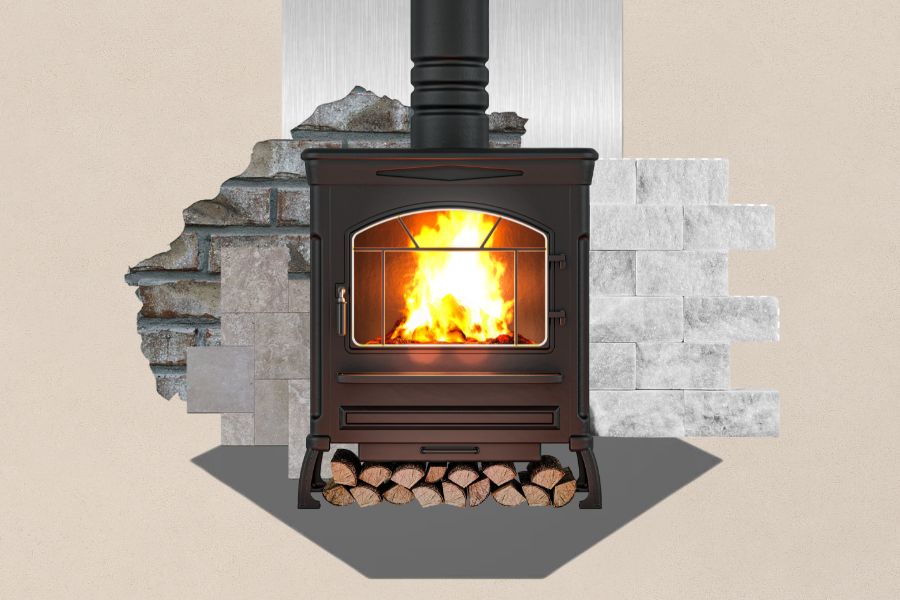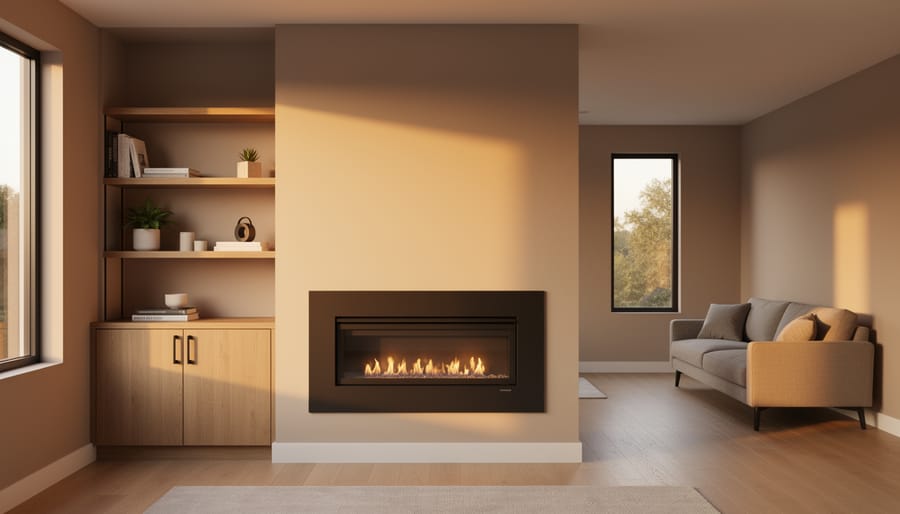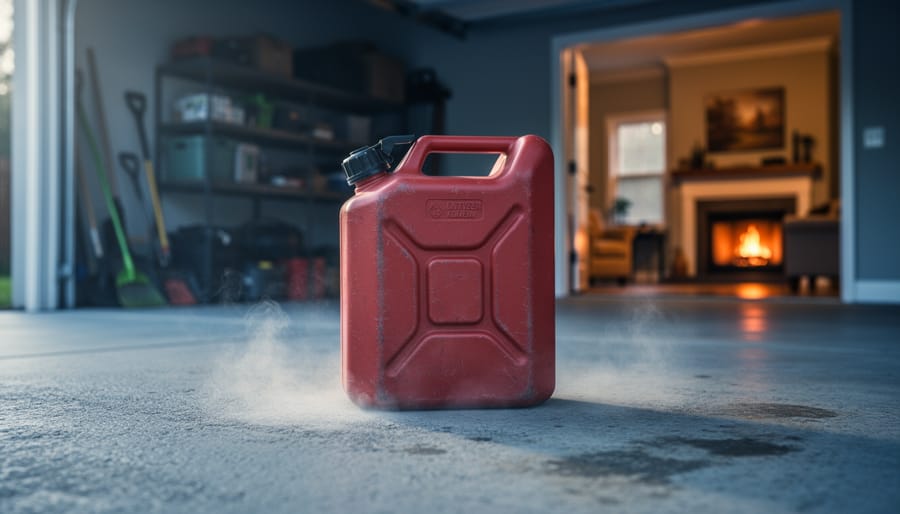Welcome to your essential guide on what to put behind a wood-burning stove. Are you looking for ways to ensure safety while enjoying the warmth of your wood stove?
Look no further! The right heat shield, whether a wood stove or wall heat shield, is vital in protecting combustible materials from high temperatures. They effectively reduce clearances between your burning stove and nearby materials.
From stone to exposed brick and even sheet metal, there’s a range of materials to choose from. You can create a back wall that shields and beautifies your living space.
And if you’re worried about installation, fear not. Fire-resistant wall spacers, ceramic spacers, and the proper air gap can make the process safer and simpler.
Whether you’re a novice at installing a wood-burning stove or an experienced wood-burning stove manufacturer, this guide will help. Let’s make your wood stoves safe, warm, and inviting for all family members while giving your room a touch of rustic elegance.
Ensuring Safety and Heat Efficiency for Your Wood-Burning Stoves
Wood-burning stoves bring warmth and charm to a room. But they can also be dangerous. Remember that safety is crucial whether you’re a wood-burning stove manufacturer or a first-time user.
Importance of Heat Shields and Wall Shields
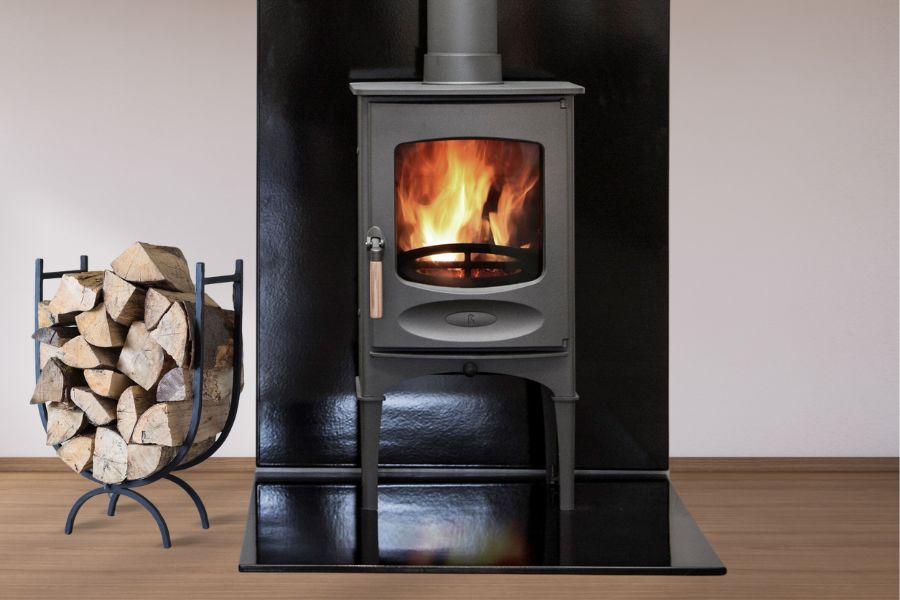
Heat shields and wall heat shields play a significant role in keeping your wood stoves safe. A wood stove radiates heat all around, especially towards the wall.
It’s hot, very hot. A heat shield, installed behind a wood-burning stove, helps to reduce this heat. It protects the wall from getting too hot.
Wall heat shields, made of cast iron or sheet metal, are excellent conductors. They divert heat from the wall areas and distribute it into the room.
But heat shields are not just for the wall. The floor needs protection from heat shields, too, especially if it’s made of combustible materials. So, a heat shield can also be installed under the stove.
Keeping Combustible Materials at Bay
Keeping combustible materials away from your wood-burning stove is key. Furniture, curtains, and even walls can catch fire around wood stoves if they get too hot. This is due to their autoignition temperature – the heat level at which they can ignite without a flame.
To prevent this, create a safety zone around your stove. No combustible material or objects should be in this zone. It reduces the risk of a wood stove fire.
Also, you must ensure an air space, or air gap, between the stove and the wall. This air gap helps cool down the hot air from the stove.
Remember, fireproof walls are not always enough. Even they can get damaged from the heat output of a wood stove over time. This is where a fire-resistant wall spacer comes in. It helps to protect the wall and keep your house safe.
In short, managing what you put behind a wood-burning stove is crucial. The right heat shield and keeping combustible materials at bay can make all the difference. It ensures safety and increases the heat efficiency of your stove. This way, you can enjoy the coziness of a wood-burning stove without worry.
Selecting Suitable Materials for Your Stove’s Backdrop
The material behind a wood stove makes a big difference. It can protect your wall and add beauty to your room. It’s all about making the right choice.
Pros and Cons of Common Material Choices
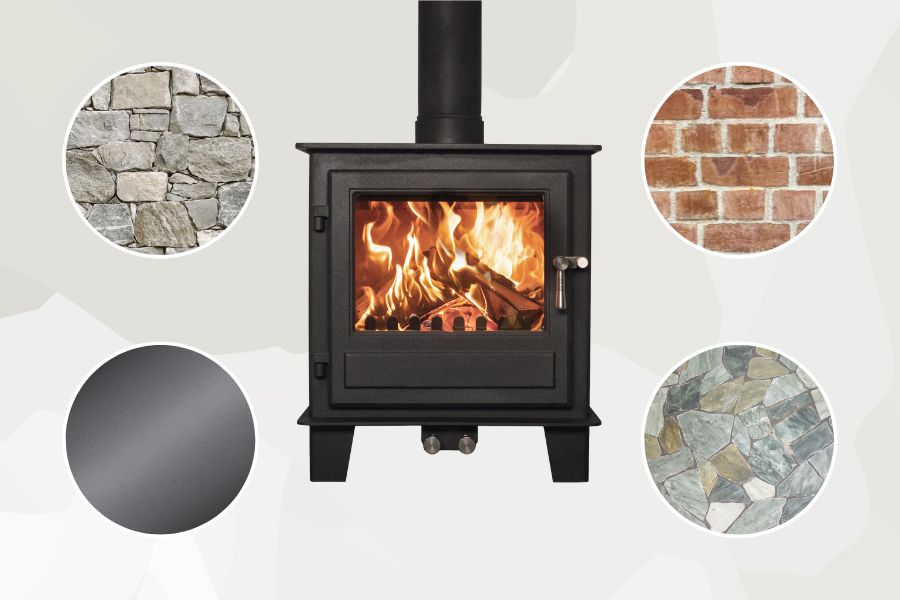
Some common material choices are stone, exposed brick, and metal. These are non-combustible materials. They are perfect for the area behind a wood stove.
Stone is an excellent heat shield. It absorbs and radiates heat. Plus, it gives a natural look to your room. But it can be costly and hard to install.
Exposed brick is also a good choice. It is sturdy and heat resistant. It brings a classic, cozy feel to your space. But, like stone, it can be pricey.
Metal, especially sheet metal, is an excellent conductor. It can take high heat. It’s also budget-friendly. But, it might not suit every room’s style.
Faux panels and tiles can mimic the look of stone or brick. They are easier to install and cheaper. But, they may not resist heat as well as natural stone or brick.
Techniques for Installing and Creating a Focal Point
First, check the safety requirements of your stove. Make sure there’s enough air space between the stove and the wall. This helps keep the wall cool.
Then, choose your material. Remember to consider the style of your room. The wall behind your wood stove should blend with the rest of your space.
Next, it’s time to install. Start by preparing your wall. You may need to remove drywall or other materials. Then, attach your heat shields. Make sure it covers the whole area behind your stove. Secure it well to the wall.
You can add extra protection with a fireproof wall or shield. This goes over your heat shield. It protects the wall from flames and smoke.
Remember, your stove’s backdrop can be a focal point. Choose materials that you love. They can make your stove stand out.
A fireplace, for example, a fireplace can be a beautiful backdrop. Or use a mix of materials—stone on the bottom, brick on top. Be creative!
Ultimately, the suitable material behind your wood stove protects your home. It also enhances the beauty of your room. So, take your time and make the right choice.
Preventing Wood Stove Fires Through Proper Installation
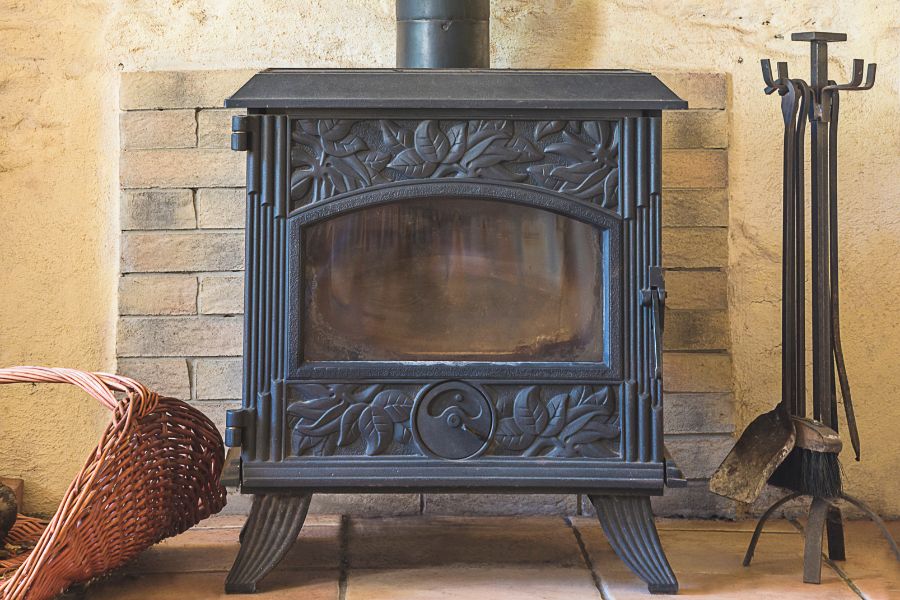
Setting up a wood stove is not just about style. It’s also about safety. A correctly installed stove can prevent fires and keep your home safe.
Essential Installation Practices and Safety Measures
First, think about where to place your wood stove. It should be far from combustible objects and materials. Things like furniture or curtains should be away from the stove’s heat. You don’t want them catching fire!
Next, look at the stove’s rear. This is where you’ll install a heat shield. The shield protects the wall. It blocks heat from the stove. But remember, the heat shield needs air. So, keep an air gap between the heat shield and the wall.
Another safety reason is the flue pipe. It takes smoke from the stove and sends it outside. But, the flue pipe can get very hot. So, protect the walls around it. Use a metal heat shield or a fireproof wall.
Also, think about your floor. It’s close to the heat source. It needs protection, too. A non-combustible pad, like brick or tile, can keep the floor safe. This pad should be big. It should cover the area under the stove and a bit more. This way, it protects from sparks that might escape from the stove.
Lastly, remember to check your stove often. Look for signs of damage or wear. Things like cracks in the bricks or tiles. Or rust on the metal parts. If you see something wrong, fix it right away.
Ultimately, a wood stove is an excellent addition to your home. It brings warmth and coziness. But, it also carries risks. So, be careful. Follow safety measures. Install your stove properly. This way, you can enjoy the stove’s heat without worry.
Bringing It All Together: A Safe and Aesthetically Pleasing Wood-Burning Stove
Having a wood-burning stove is great. It gives warmth and style to your home. But, it also needs careful planning and installation.
First, remember the basics. Keep the stove away from nearby combustible materials. Install a heat shield on the wall at the rear. It protects the wall from the stove’s heat. Make sure there is space for air between the wall and the heat shield.
Second, consider the look of your stove. Do you like brick or tile? Or do you prefer faux panels? Any of these can be a great choice. But remember, your choice should not only be about style. It should also be about safety.
Also, don’t forget about protection. Your floor needs a non-combustible surface under the stove. A tile or brick pad can do the job. It protects from sparks that could start a fire.
Lastly, think about the range of heat. Your stove needs space. It needs room to radiate its warmth. So, don’t put it in a tight corner — unless it’s a corner wood stove carefully designed with safety and functionality in mind.
In the end, a well-planned and installed stove can be a joy. It’s a safe and beautiful heat source. It’s a cozy fireplace for you and your family to enjoy.

